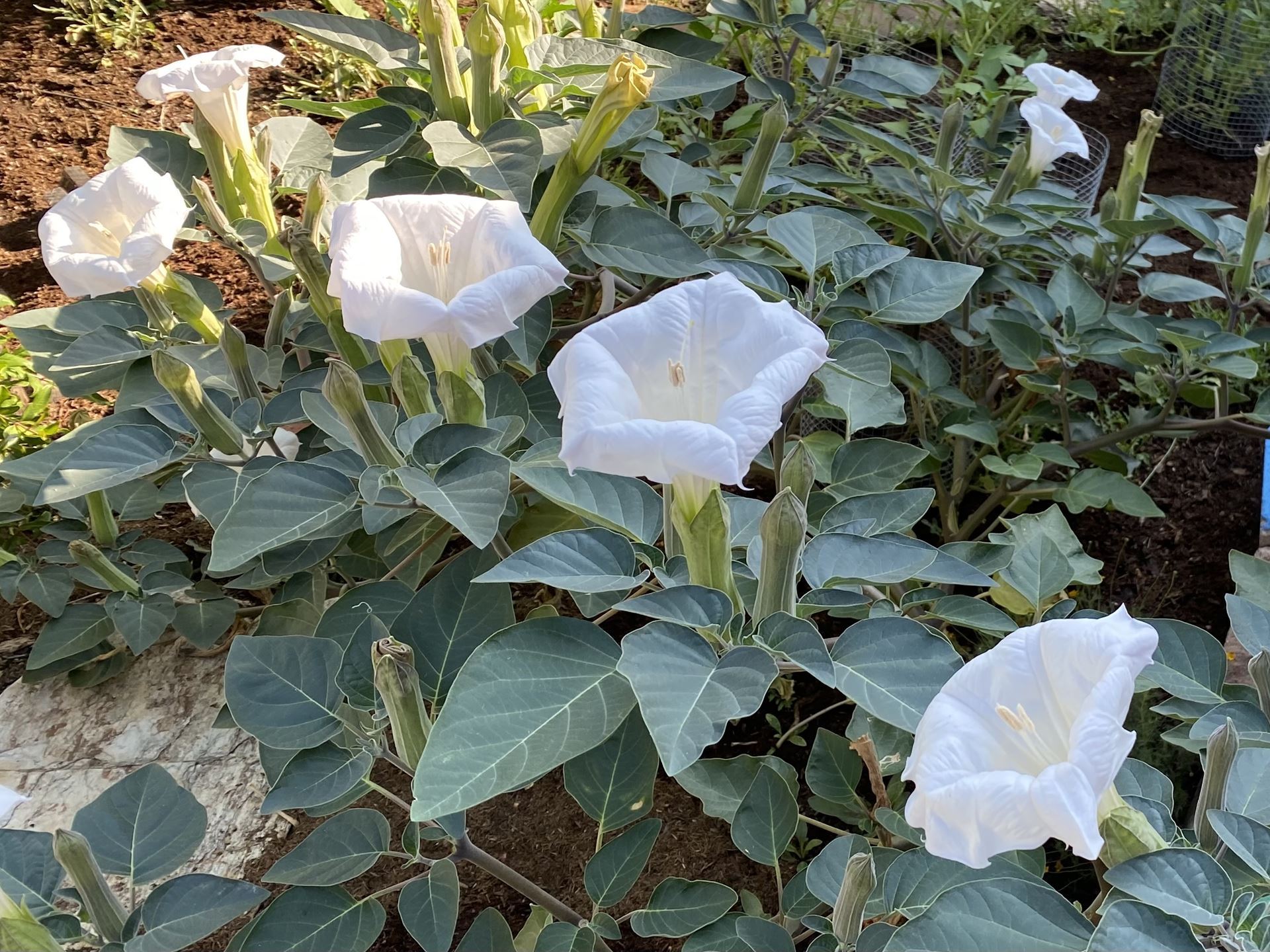
Author: Keith Ashley, AWF Development Director
2023 marks the 50th anniversary of the National Wildlife Federation’s Gardening for Wildlife program and the 100th anniversary of the Arizona Wildlife Federation’s founding with guidance from Aldo Leopold, famed American conservationist. This reflection is in honor of our great fortune to be celebrating these milestones together.
May 15, 2023: The sacred datura* in my backyard unfurled its first great funnel flower of the year last night – and I missed it!
I had been checking the darned thing every evening for days, but it still seemed tightly closed enough yesterday that I assumed it needed one more night to perfect its nectar and pollen … and poison. Fortunately, I was up and out well before dawn today.
As Aldo Leopold wrote in his brief essay Too Early:
Getting up too early is a vice habitual in horned owls, stars, geese, and freight trains. Some hunters acquire it from geese, and some coffee pots from hunters. It is strange that of all the multitude of creatures who must rise in the morning at some time, only these few should have discovered the most pleasant and least useful time for doing it.
When I stepped out back to enjoy a few last moments of darkness, my eyes were drawn immediately to the bright white trumpet beacon of the datura blossom. “What the …?!” was my first thought. And then, as if by reflex, my search began … for the sphinx moths. Not too early in the morning, but perhaps too early in the season.


When I first read Leopold’s Sand County Almanac as a much younger man, I was struck by the ways in which the conservation challenges of his era mirrored our own, even if there had been many shifts for the worse in the intervening 50 years (and a very few for the better). I was also struck by the fact that absolutely nothing had changed in the magical ways wildlife touches our lives.
In the middle of last year’s monsoon season, I was out in the yard late one evening nervously holding a rattlesnake watch. Two of them (yes, two VERY BIG ones!) were threatening to take up residence under my tiny bedroom deck. I’m all about gardening for wildlife, but I’m a bit unsure about hosting a rattlesnake farm. And that’s when they appeared, all around me—whizzing, whirring, floating, diving, not two, not three, but a whole host of the largest sphinx moths I’d ever seen—like a sci-fi hybrid between hummingbirds and fruit bats (hummingbats!) – I could feel the excited breeze from their wings all around me.
By that point in the monsoon, the datura in my garden was gigantic—four feet high, six feet wide—and covered with its perfumy sweet blossoms almost every evening. But this was the first time I had encountered such an enormous species of sphinx moths descending upon it. Mottled black and white with wingspans easily five inches across, they transported me to some unimagined tropical kingdom and created a backyard experience I will never forget.
Leopold launches his collection of essays with the famous words: “There are some who can live without wild things, and some who cannot. These essays are the delights and dilemmas of one who cannot.”
The genius of gardening for wildlife is not just the power it gives each of us to support wildlife directly, but the way it makes your home patch—be it balcony or backyard—one of those magical places where the wild things are. Scale up that intentional living, from supporting wild things as an individual to supporting them as an organization, and you have the genius of the Arizona Wildlife Federation.
Celebrating 50 years of Gardening for Wildlife and 100 years of the Arizona Wildlife Federation (with Aldo Leopold in the mix as well) is a good place for all of us to be.
*Sacred datura (Datura wrightii/meteloides) also known as jimson weed, toloache grande, belladonna – Large fragrant blossoms of this perennial herb open at night. All parts of this member of the nightshade family are poisonous. Sphinx moths (also known as hawkmoths) pollinate the flowers and use the leaves as a larval food source, which in turn makes the caterpillars (“hornworms”) toxic to predators. Adds interest to wildlife gardens May through October; entirely dormant in winter.
.png)